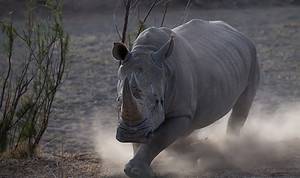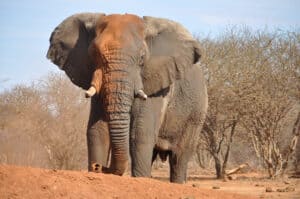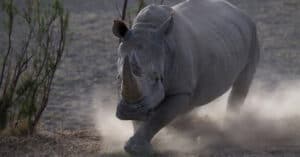There really isn’t another animal like the rhino. Rhinos are massive creatures that are instantly identifiable, and humans all over know about them. Incredibly, there is an ancient animal that roamed South America that was incredibly similar to the rhino in size. This creature was actually so common that it is sometimes considered the most common large-hoofed animal in the region! Let’s explore this strange and ancient creature together.
Toxodon, the Extinct Rhino-Like Creature That Roamed South America

The
Toxodongenus belonged to the
Notoungulataorder.
©iStock.com/ivan-96
South America has always been home to some of the largest creatures to ever live. In fact, some of the largest dinosaurs lived in the region and have names like Argentinosaurus. Although the dinosaurs were the largest land animals to ever live, there were plenty of large creatures to come after them! Toxodon is an extinct genus of mammals that lived in South America and somewhat resembles modern-day’s rhinos.
Toxodon is unique in that it was among the last members of its order. When it went extinct, there weren’t any other creatures like it! As a genus, Toxodon wasn’t a single species, but a group of related species. Still, they were all quite similar and were the last of their kind.
The Toxodon genus belonged to the Notoungulata order, a group of creatures that ranged in size from rabbits to rhinos, and everything in between. While Toxodon was around, it would have been the largest member of the order. Even more, Toxodon was likely the largest and most common hoofed mammal in South America at the time.
What Did Toxodon Look Like?
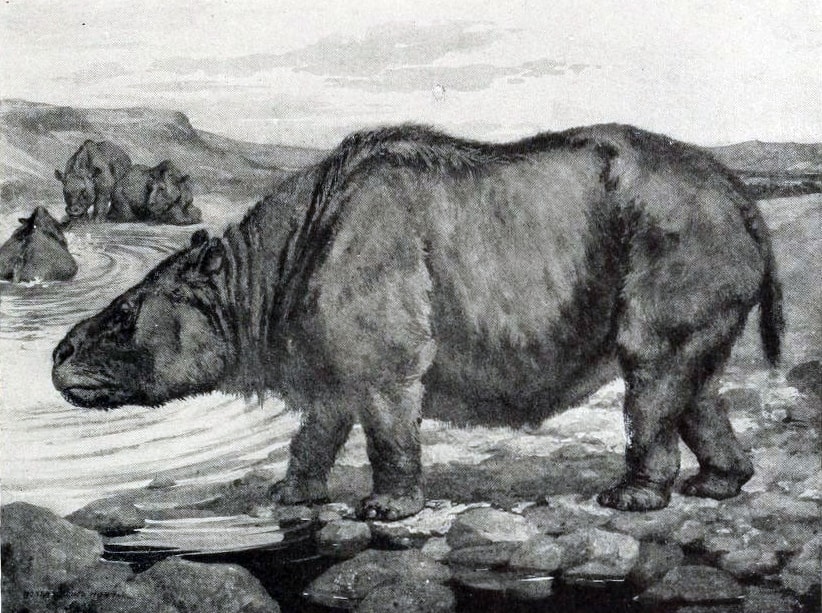
was probably 8 feet 10 inches long and weighed upwards of 3,120 lbs.
©Robert Bruce Horsfall / public domain – License
Toxodon was a strange creature. In fact, Charles Darwin was one of the first people ever to discover fossils of Toxodon and described it like this:
Lastly, the Toxodon, perhaps one of the strangest animals ever discovered: In size it equaled an elephant or megatherium, but the structure of its teeth, as Mr. Owen states, proves indisputably that it was intimately related to the Gnawers, the order which, at the present day, includes most of the smallest quadrupeds: In many details it is allied to the Pachydermata: Judging from the position of its eyes, ears, and nostrils, it was probably aquatic, like the Dugong and Manatee, to which it is also allied. How wonderfully are the different Orders, at the present time so well separated, blended together in different points of the structure of the Toxodon!
Although his description of the creature’s anatomy was roughly correct, he wasn’t exactly right as to its ecological niche (Toxodon wasn’t aquatic, for example).
With further research, however, more accurate numbers have been given. Toxodon was probably 8 feet 10 inches long and weighed upwards of 3,120 lbs, making it an extremely large animal. For reference, modern rhinos range from 2,000 up to 7,000 lbs.
When Did Toxodon Live?
Toxodon lived during the Late Miocene into the Holocene epochs, right at the beginning of the Neogene Period. The Neogene Period lasted from 23 million years ago until 5.3 million years ago. Incredibly, Toxodon lived from 11.6 million years ago until 0.011 million years ago (11,000 years ago). This means that Toxodon was alive and well while humans were around!
In fact, many scientists believe that human hunting played a role in the extinction of these large animals. Remains at that Arroyo Seco 2 site in Pampas (Argentina) showed that humans were likely butchering these animals, giving credence to the idea. Outside of human hunting, Toxodon was also impacted by the Quaternary extinction event, an event that also spurred the decline of other large megafauna in South America.
Where Did Toxodon Live?
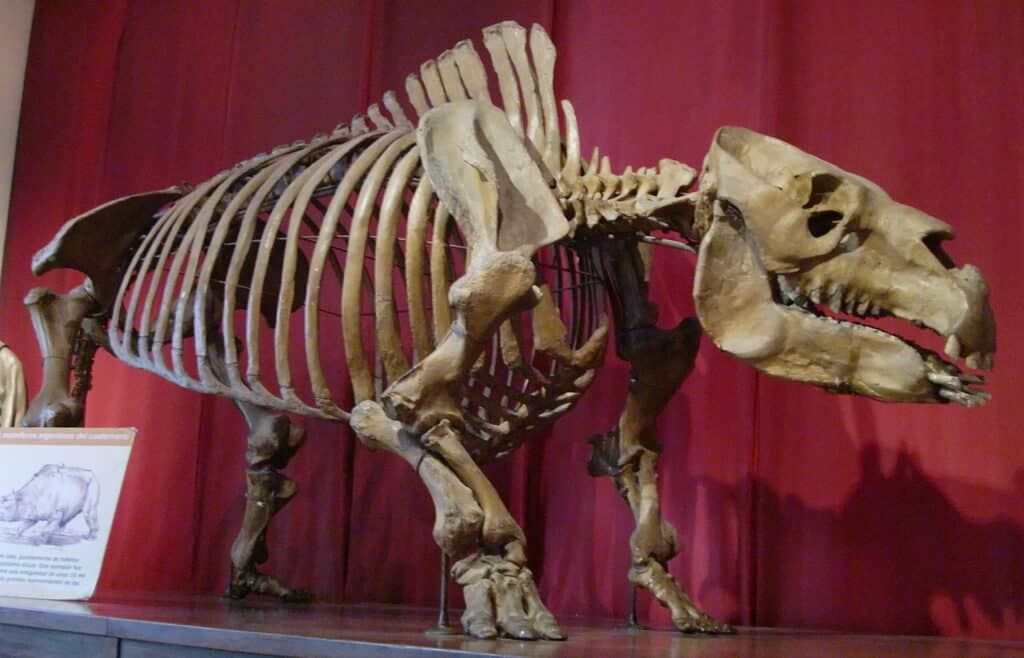
was located in modern-day South America.
©WereSpielChequers / CC BY-SA 3.0 – License
Toxodon was located in modern-day South America. They were extremely numerous and were likely the largest and most numerous hoofed mammals in the region. Toxodon preferred low grasslands but had a range that also extended into the Amazon Rainforest. Fossils have been discovered in multiple regions, mostly according to the time frame:
Holocene
- Abismo Ponto de Flecha, Brazil
Pleistocene
- San José, Fortin Tres Pozos, Chaco and Luján Formations, Argentina
- Tarija and Ñuapua Formations, Bolivia
- Brazil
- Paraguay
- Sopas and Dolores Formations, Uruguay
Miocene-Pliocene
- Monte Hermoso Formation, Argentina
Miocene
- Ituzaingó Formation
Up Next:
The photo featured at the top of this post is © WereSpielChequers / CC BY-SA 3.0 – License / Original
Thank you for reading! Have some feedback for us? Contact the AZ Animals editorial team.



